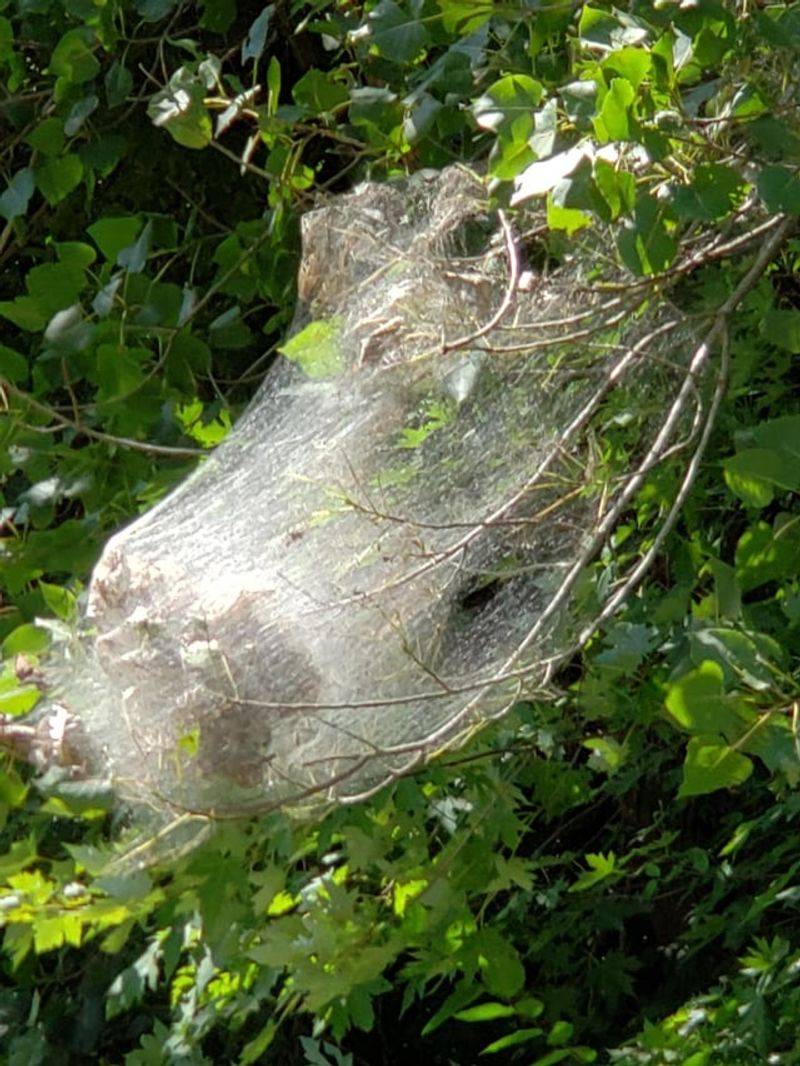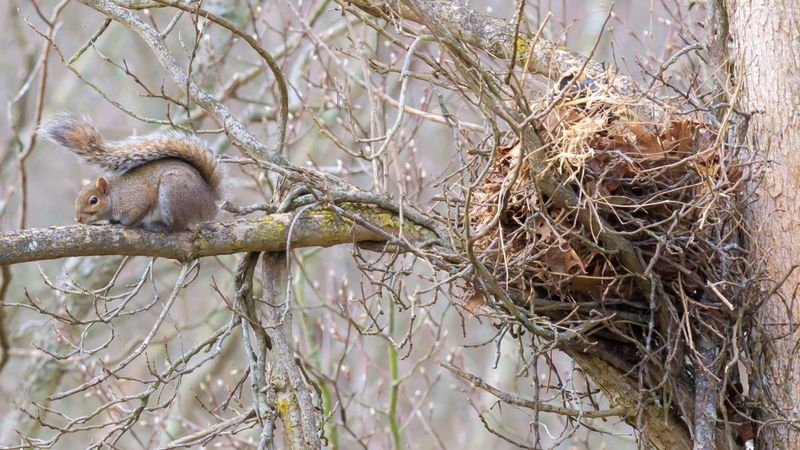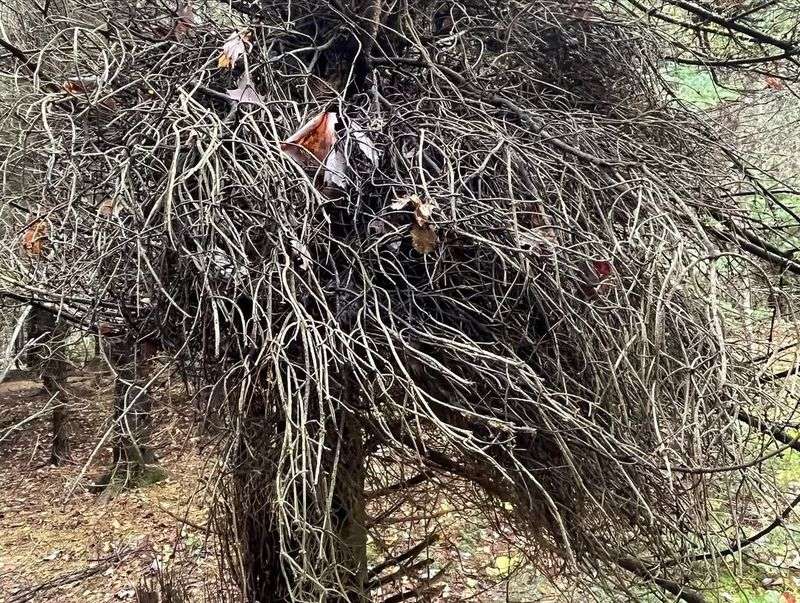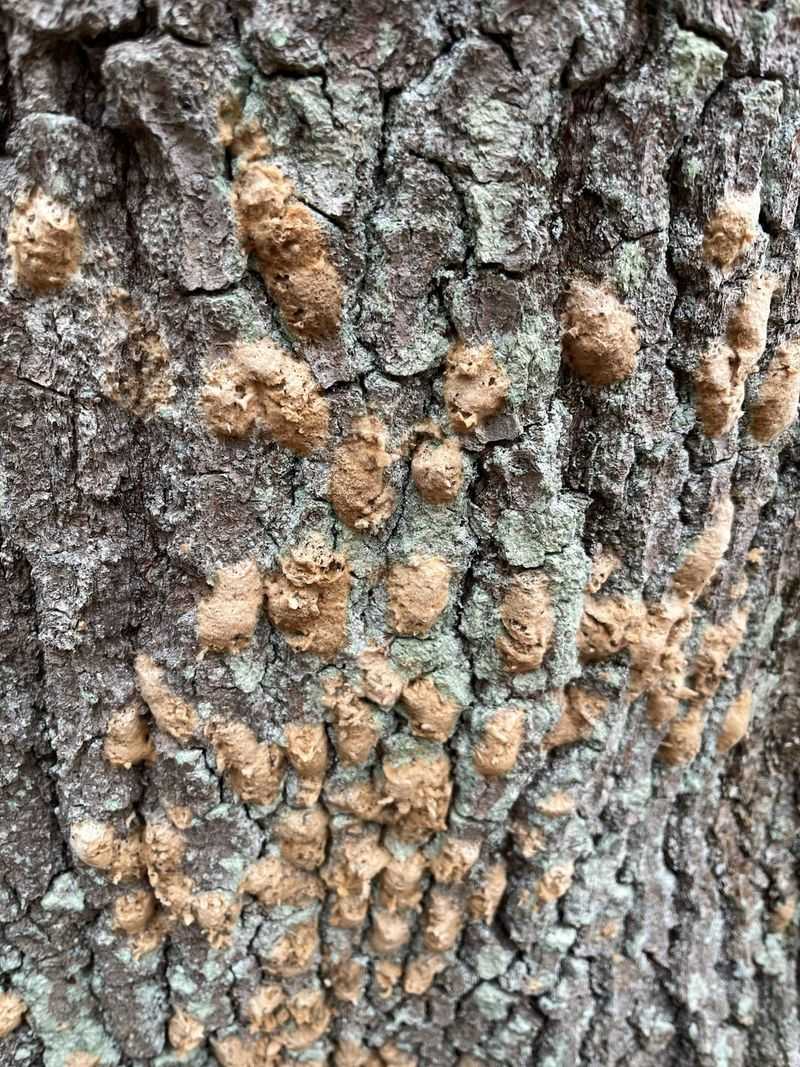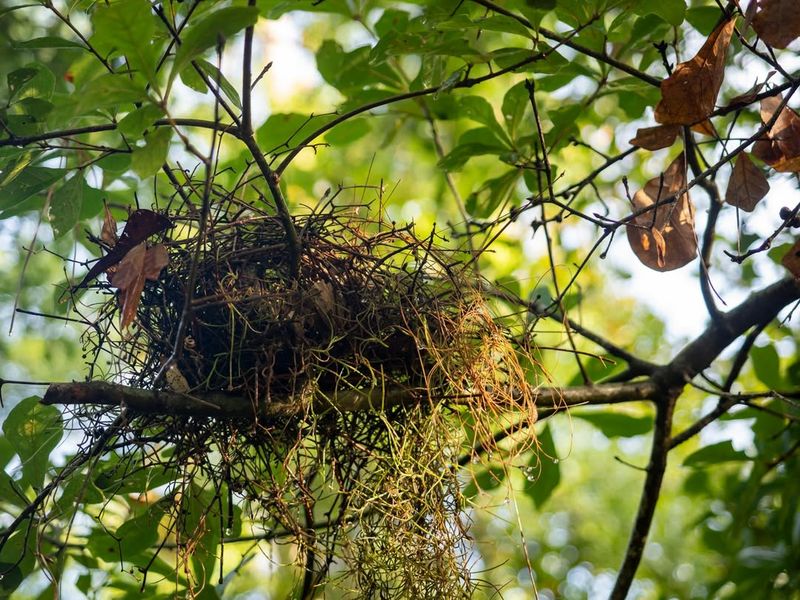Walking through your yard this fall, you might notice odd clusters hanging in the trees and wonder if they’re abandoned bird nests. Many Wisconsin residents spot these mysterious bundles and assume they’re leftover homes from spring, but the truth is often quite different.
Some of these formations are actually created by insects, fungi, or other natural processes that become more visible as leaves drop. Understanding what’s really up there can help you decide whether to leave it alone or take action.
1. Eastern Tent Caterpillar Webs
Those silky white structures wedged in tree forks are often leftover homes from tent caterpillars that feasted on leaves back in spring.
By autumn, the caterpillars have long since transformed into moths and flown away, leaving behind their weathered silk tents. These webs become especially noticeable across Wisconsin once the leaves fall and expose the bare branches.
While they look concerning, they’re harmless remnants that will eventually break down over winter. You can leave them alone or remove them if they bother you—either way, the caterpillars won’t return to them.
2. Squirrel Dreys
Squirrels build impressive leaf nests called dreys that look like messy balls of twigs and foliage wedged high in the branches.
Unlike bird nests, these structures are much larger—often the size of a basketball—and constructed with layers of leaves, bark, and moss for insulation. Throughout Wisconsin, squirrels rely on these dreys to stay warm during harsh winter months.
They typically build multiple nests as backups in case one gets damaged. If you spot one, it’s likely still in use, so it’s best to leave it undisturbed and let the resident squirrel enjoy its cozy home.
3. Bagworm Cases
Bagworms create peculiar cone-shaped cases from silk and bits of the host plant, making them blend in surprisingly well with the tree itself.
These little pouches dangle from branches and can easily be mistaken for pinecones or seed pods at first glance. Evergreens and some deciduous trees in Wisconsin are common targets for these pests. Inside each case, the bagworm overwinters as eggs, ready to hatch and start feeding come spring.
Removing and destroying the cases during fall and winter is the most effective control method, preventing next year’s infestation before it even begins.
4. Witch’s Broom Growth
Sometimes what looks like a nest is actually a dense cluster of twigs growing from a single point, known as a witch’s broom.
This abnormal growth pattern results from fungal infections, mites, or genetic mutations that cause the tree to produce excessive shoots in one spot. These formations are fairly common on various tree species throughout Wisconsin and become more visible after leaf drop.
While they may look alarming, witch’s brooms rarely threaten the tree’s health, though they can weaken the affected branch. Most homeowners simply prune them out for aesthetic reasons, but they’re harmless if left alone.
5. Paper Wasp Nests
Paper wasps construct elegant nests from chewed wood fibers that dry into a gray, papery material with visible honeycomb cells. By fall, most of the colony has died off, leaving behind only the empty nest clinging to a branch or tucked under a limb.
Wisconsin’s cooler autumn temperatures signal the end of the wasp lifecycle, making late fall the safest time to remove these nests.
Only the fertilized queens survive winter by hiding elsewhere, not in the old nest. If you’re certain the nest is abandoned and inactive, you can safely knock it down without worry.
6. Gypsy Moth Egg Masses
Gypsy moths lay their eggs in fuzzy, tan-colored masses that look like someone smeared felt onto the bark or branch. Each mass contains hundreds of eggs covered in a protective layer of hair from the female moth’s body.
These invasive pests have caused significant damage to Wisconsin forests over the years, so spotting and removing egg masses in fall is crucial for protecting your trees.
Scrape them off into soapy water to destroy them before they hatch in spring. Taking action now can prevent next summer’s caterpillars from defoliating your trees and spreading further through your neighborhood.
7. Old Bird Nests
Sometimes the cluster you’re seeing really is just an old bird nest left behind after the breeding season ended. Most songbirds in Wisconsin build new nests each spring rather than reusing old ones, so these structures become abandoned relics once the chicks fledge.
Bird nests are typically cup-shaped with woven grasses, twigs, and sometimes mud, distinguishing them from insect-made structures.
They’re completely harmless and actually provide nesting material for other birds who might scavenge from them next year. Feel free to leave them in place as a reminder of the busy spring that was.


